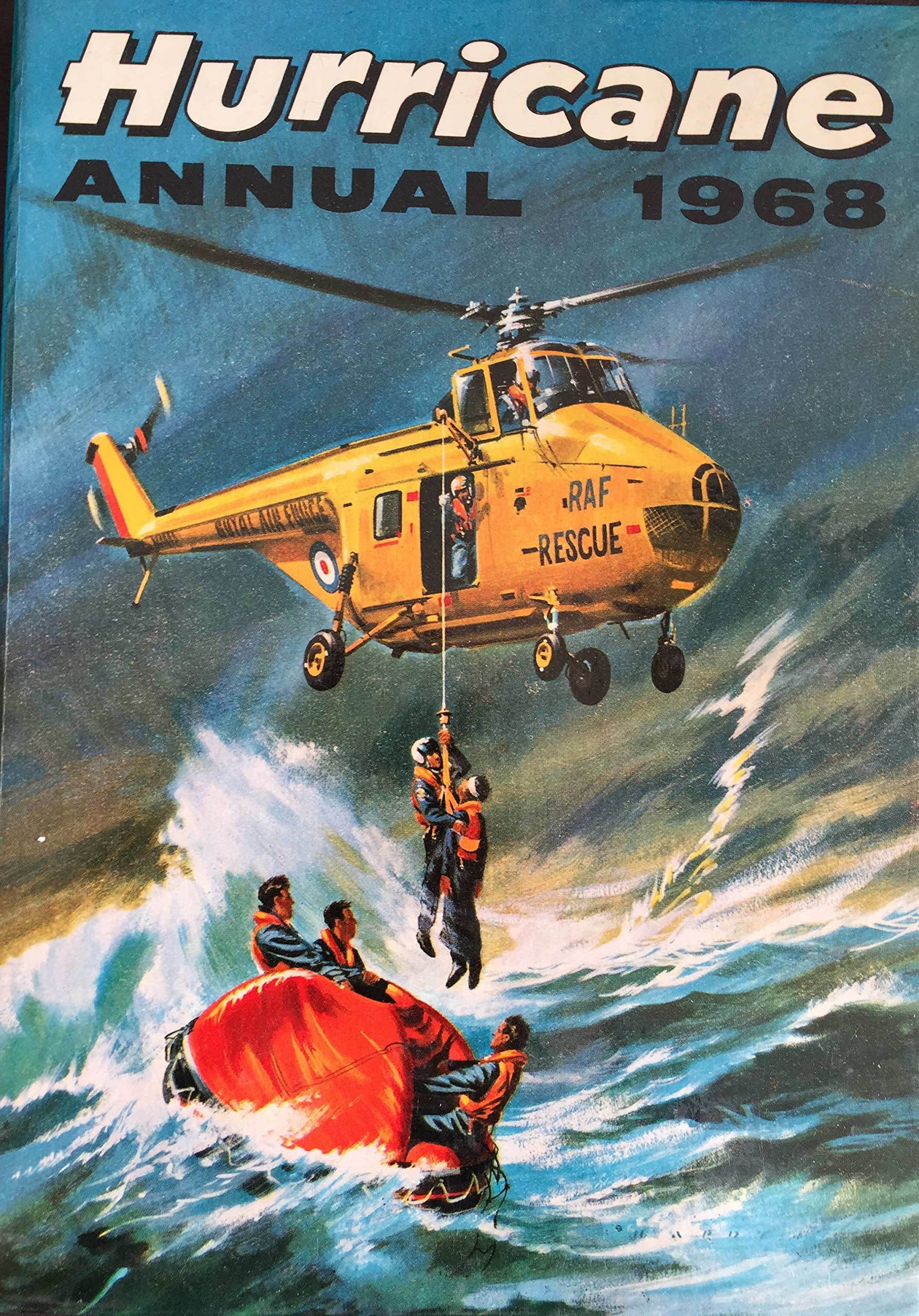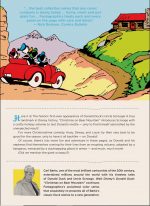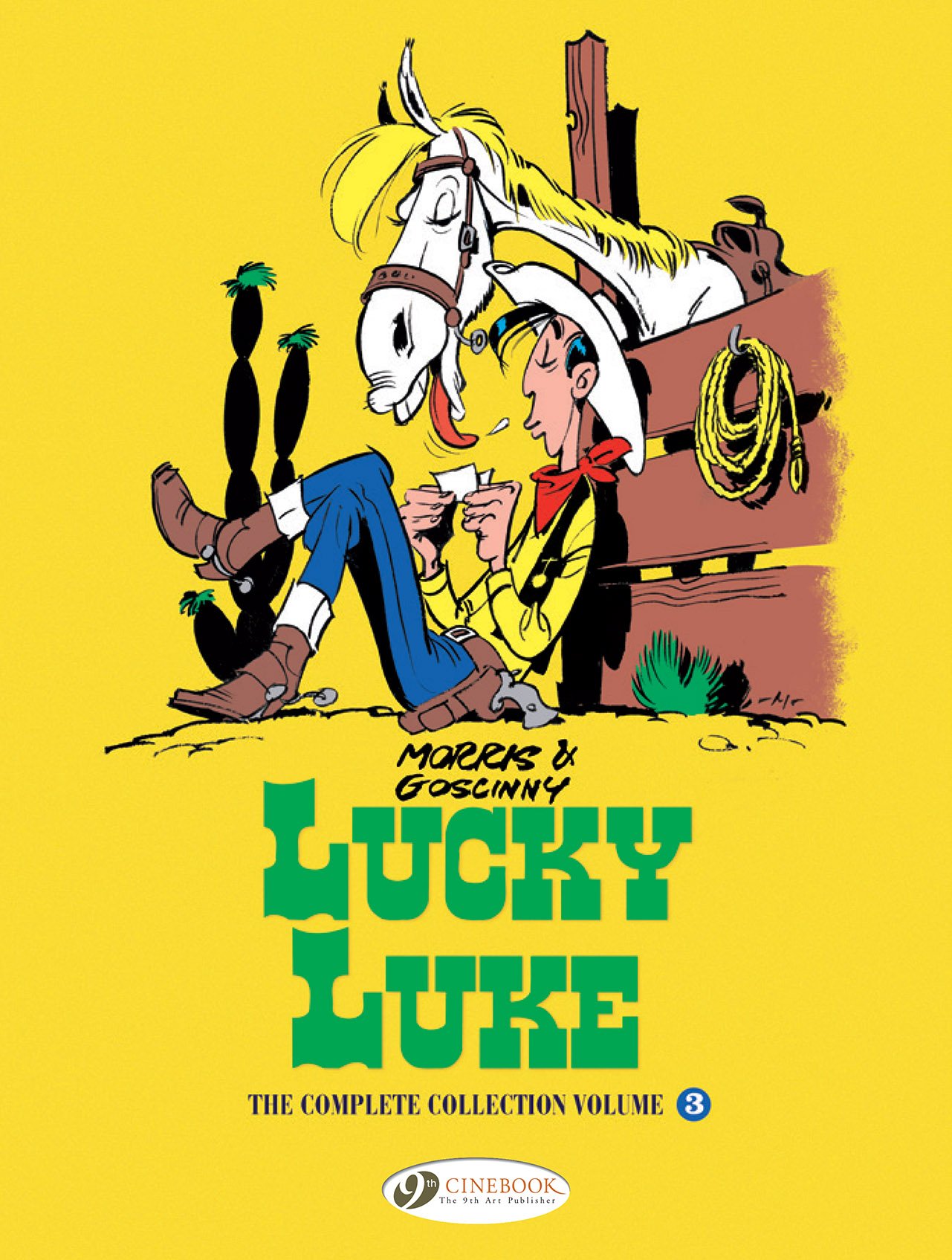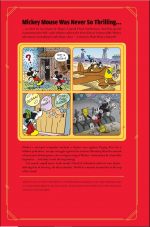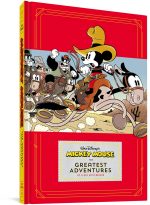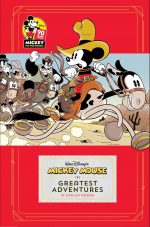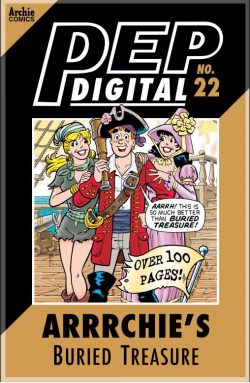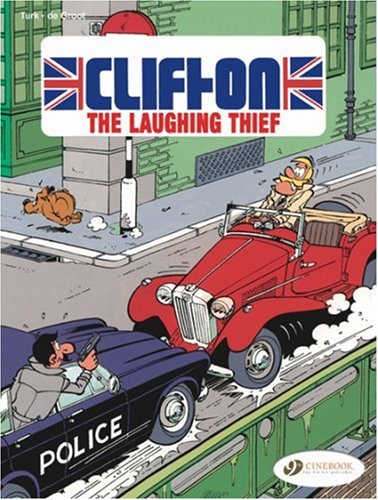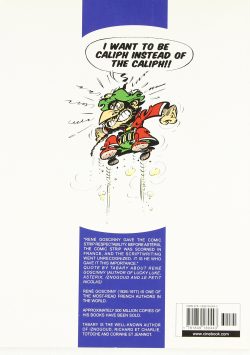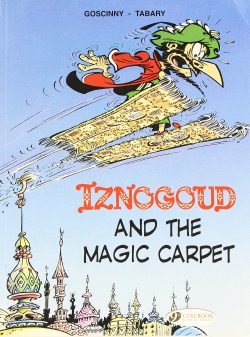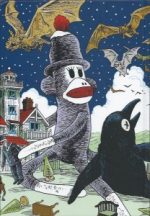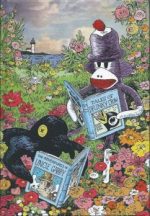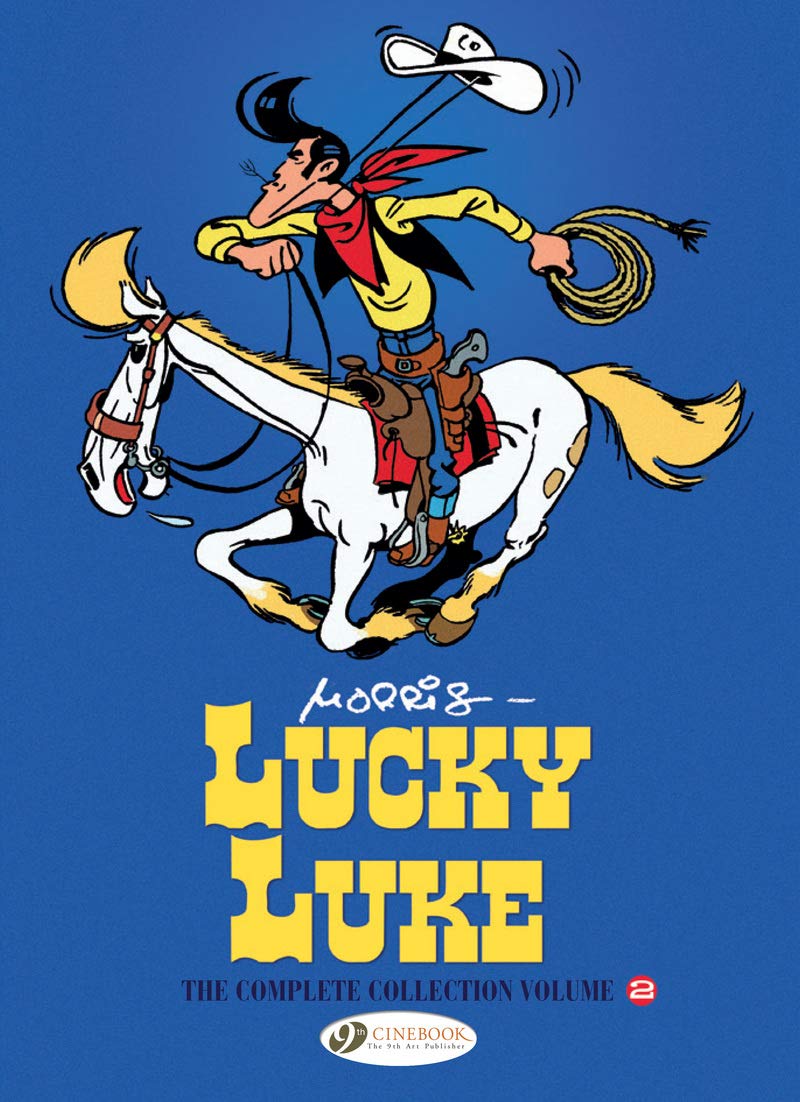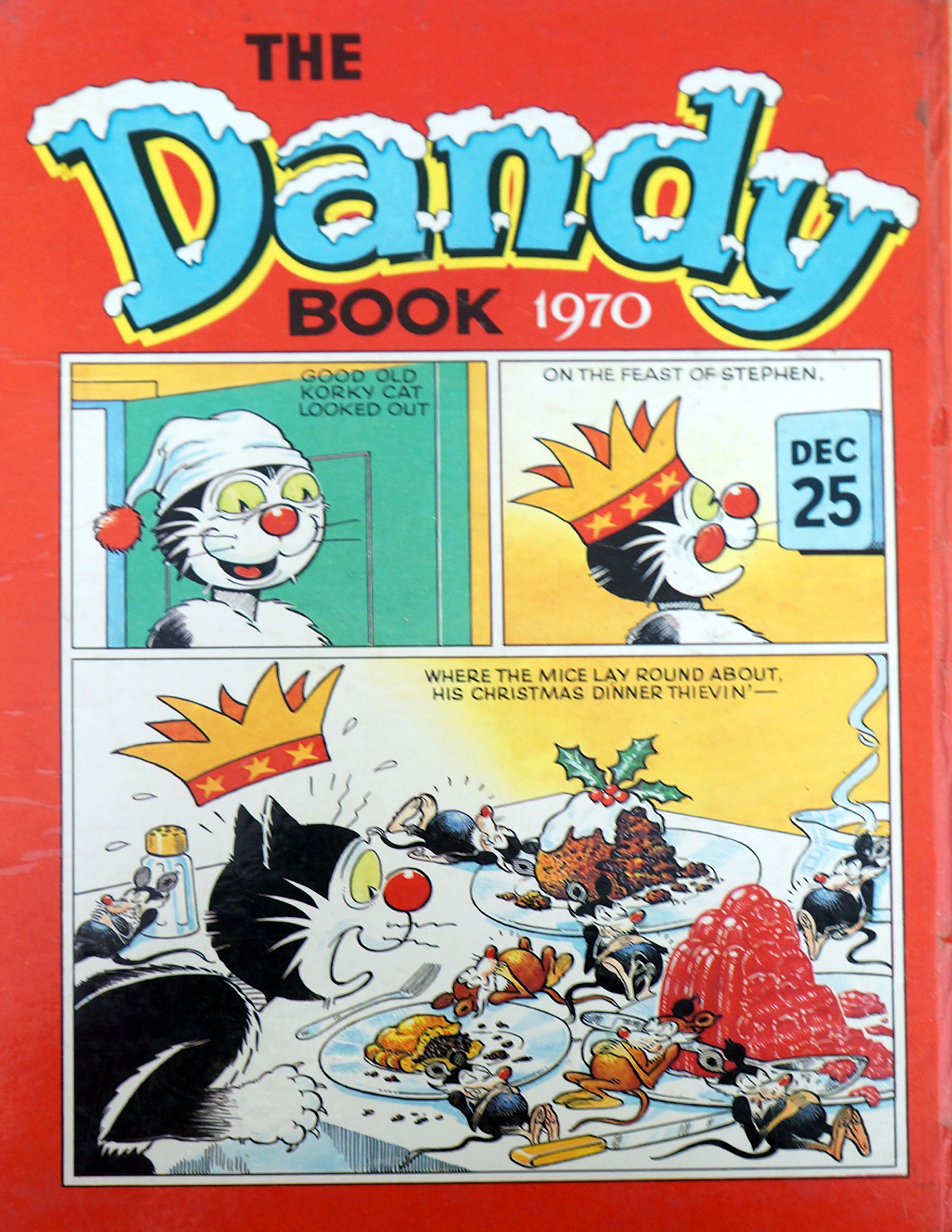
By Many & various (D.C. Thomson & Co.)
ISBN: 978-0-85116-008-5 (HB)
For generations of British fans Christmas means The Beano Book, The Broons, Oor Wullie and making every December 25th magical. There used to be many more DC Thomson titles, but the years have gradually winnowed them away. Thankfully, time means nothing here, so this year I’m concentrating on a another Thomson Christmas cracker that made me the man wot I am. As usual my knowledge of the creators involved is woefully inadequate but I’m going to hazard a few guesses anyway, in the hope that someone with better knowledge will correct me when I err.
The Dandy comic predated The Beano by eight months, utterly revolutionising the way children’s publications looked and – most importantly – how they were read. Over decades it produced a bevy of household names that delighted millions of households, with end of year celebrations being bumper bonanzas of the weekly stars in magnificent bumper hardback annuals.
Premiering on December 4th December 1937, The Dandy broke the mould of its hidebound British predecessors by using word balloons and captions rather than narrative blocks of text under the sequential picture frames. A colossal success, it was followed on July 30th 1938 by The Beano and together they completely changed children’s publications. Dandy was the third longest running comic in the world (behind Italy’s Il Giornalino – launched in 1924 – and America’s Detective Comics in March 1937).
Over the decades the “terrible twins†spawned countless cartoon stars of unforgettable and beloved household names who delighted generations of avid and devoted readers…
The fun-filled action begins on the inside front cover as seasoned star Korky the Cat (by Charles Grigg?) set the ball rolling as he dodges the rozzers after a spot of illicit angling. As was traditional at this time, he also performed similar service at the far end – there falling foul of his own meagre engineering skills after building a triple decker “cartie†(think of the Red Bull Soapbox Challenge but sans the manic testosterone overload…)
These annuals were traditionally produced in the wonderful “half-colour†that many British publishers used to keep costs down whilst bringing a little spark into our drab and gloomy young lives. This was done by printing sections of the books with two plates, such as blue/Cyan and red/Magenta. The versatility and palette range provided was astounding. Even now this technique screams “Holidays†to me and my contemporaries, and this volume uses the technique to stunning effect.
D.C. Thomson were also extremely adept at combining anarchic, clownish comedy with solid fantasy adventure tales such as opening comedy thriller ‘King of the Sawdust Ring’ (limned by Paddy Brennan) wherein circus boy Billy King has to recapture an escaped lion and save his pet deer when a parade through town goes badly wrong…
As seen here, these picture thrillers usually came in the old-fashioned captioned format, with blocks of typeset text rather than lettered word balloons. Drama gives way to daft destruction as cowboy superman Desperate Dan (by Dudley D. Watkins) gets lost in fog, whilst another Korky the Cat short wreaks havoc in an ironmonger’s shop before his picture puzzle ‘Twig the Twins!’ – by the always-magnificent Eric Roberts – tests mind and eye.
The Smasher was a lad cut from the same mould as Dennis the Menace and in the episodes here (by Hugh Morren) he carves a characteristic swathe of anarchic destruction, even if his first encounter proves he’s not the toughest lad in town…
Drawn by Ron Spencer, pint-sized Dinah Mite proves she has no need of martial arts training after which hard-pressed squaddie Corporal Clott (by Dennis the Menace originator Davy Law or possibly his successor David Sutherland) disrupts the Army Camp sports day and accidentally and painfully boosts surly Colonel Grumbly to undreamed of heights.
Drawn by Jimmy Hughes, Bully Beef and Chips invariably proved that a weedy underdog’s brain always trumped brutal brawn, as here where little Chips orchestrates a well-deserved water-pistol drubbing…
Eric Roberts does triple-duty this year with puzzles, schoolboy grifter Winker Watson and perennial bath-dodger Dirty Dick who here plays chalk-based pranks on the police, after which Winker Watson’s Dandy Doodles baffle and bemuse before crafty Korky is outsmarted by a peg-legged sailor…
Another package of light-hearted drama then ensues courtesy of schoolboy Charley Brand and his robotic pal ‘Brassneck’– by the fabulous Bill Holroyd – who are largely innocent spectators as Christmas Day devolves into a toy and snowball brawl for all the adults in the street, after which Desperate Dan learns the cost of his well-meaning but excessive generosity and Dinah Mite discovers another benefit to small size and big muscles at a football match…
Bully Beef and Chips then clash whilst fishing which segues into a tale of The Island of Monsters (drawn by Q-Bikes artist Andrew Hutton?): a thrilling castaway series with two boys marooned on a tropical paradise where all the animals are incredibly enlarged. This time, the lads witness the results of human pirates underestimating the power and ferocity of giant gulls, beetles, bees and grasshoppers…
Next ‘Dirty Dick’s Picture Puzzle’ tests our brains before Korky’s superstitious nature pays off in a fish supper and our little Dick pops back, finally meeting his match in an escaped zoo chimp in a grubby but great strip by (perhaps) Tom Williams.
Whilst a great deal of material was based on school as seen by pupils, George Martin’s ‘Greedy Pigg’ featured a voracious teacher always attempting to confiscate and scoff his pupils’ snacks. Here he abandons kids’ tuck boxes to extend his appetite to encompass the pantries and larders of adults and even a wandering tramp gets what he deserves…
Dinah Mite then returns to train her new gang to the peak of punishing fitness, after which Desperate Dan’s heavy-footed antics wreck the skating pond and The Smasher takes three pages to ponder his job when he grows up.
Korky’s parrot declares war on the cat but comes to regret allying with the mice, whilst Corporal Clott successfully spoils target practice and Dirty Dick cleans up as golf caddy.
Jimmy Hughes’ geriatric delinquent Smarty Gran’pa mentors little kids in scrumping, pranking and dodging coppers whilst Corporal Clott wrecks record-keeping and penmanship before we return to drama as ‘Ricky’s Racer’ (probably by Brennan) sees a poor but proud kid master a found sledge: tearing up the icy landscape, making friends with a rich toff’s son and even foiling a burglary in a ripping yarn only DC Thomson could pull off…
A brutal training regime pays off in scoff for The Smasher’s new gang, before Bully Beef and Chips escalate a darts match into armoured warfare heralding classic comedy japes in a posh private school…
Winker Watson was always a triumph for artistic legend Eric Roberts, who here turns a visiting TV documentary crew into the spur for another string of victories against boarding school tyranny. Our devious mastermind easily humiliates the masters and treats his chums to a “slap-up feed†of the kind ‘Greedy Pigg’ constantly contrived to steal.
In a neat segue, George Martin’s voracious pie predator is led to his “just desserts†by toffee apples stuck on arrows before Robert returns with picture teaser ‘Winker Watson’s Class for Clever Dicks’ – combining comedy with brain testing scenarios before Dirty Dick encounters a military mascot and learns how the army deal with dust and disarray…
Korky’s flying lessons soon bring him into dispute with squadrons of geese, after which family favourite ‘Spunky and his Spider’ offers another delightfully rustic tale of an affable, truanting kid and his devoted, amiable apple-loving, giant antediluvian arachnid as limned by the fabulous Bill Holroyd. This time the eight-legged wonder helps school kids beat bullies trying to snatch the cash made from carol-singing…
Greedy Pigg’s appetite and lack of scruples scupper him again just as Desperate Dan’s snow balls make him lots of enemies whilst Bodger the Bookworm (by Shamus O’Doherty) uses some novel notions to retrieve a confiscated ball before the fun climaxes with the saga of Barefoot Bill (Hutton again?): a schoolboy whose gigantic feet and love of soccer forced him to learn to play sans footwear…
With Puzzle Answers and the aforementioned Korky endpapers wrapping up proceedings, let’s celebrate another tremendously fun book, with so much merriment on offer I can’t believe this book is over half a century old and still available through second hand outlets.
The only thing better would by curated archive reissues and digital editions…
© 1968 D.C. Thomson & Co., Ltd. All rights reserved.
The DANDY is a trademark of and © D. C. Thomson & Co. Ltd. 2006. Associated characters, text and artwork © D. C. Thomson & Co. Ltd. 2006. All rights reserved.

